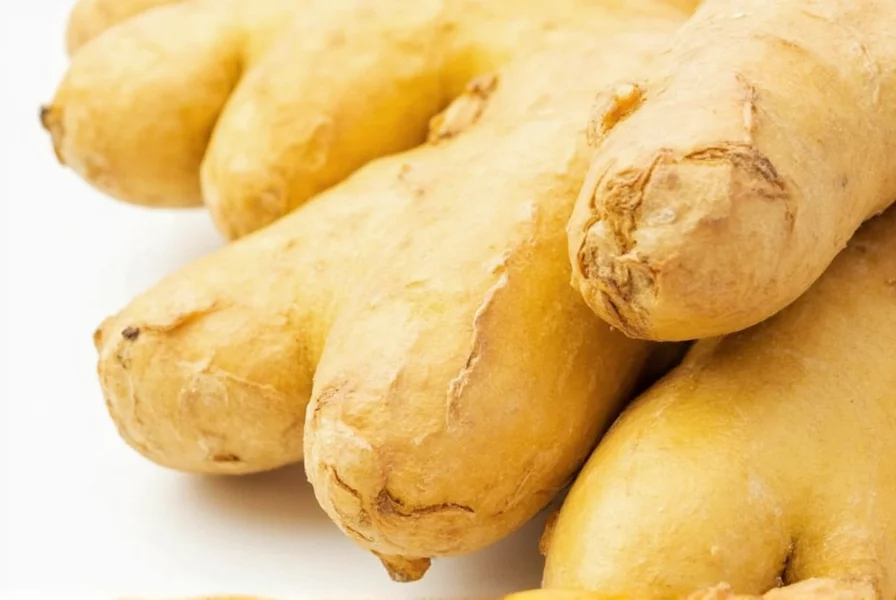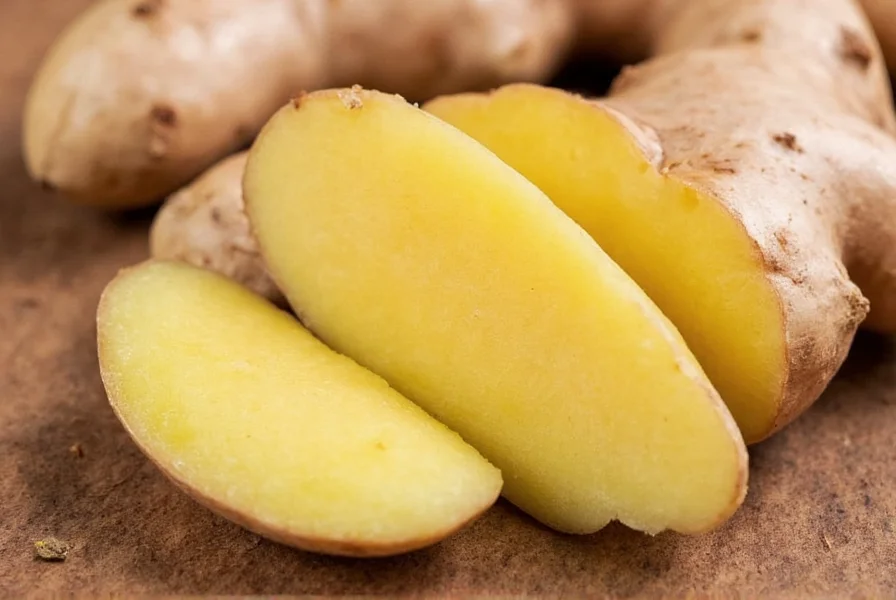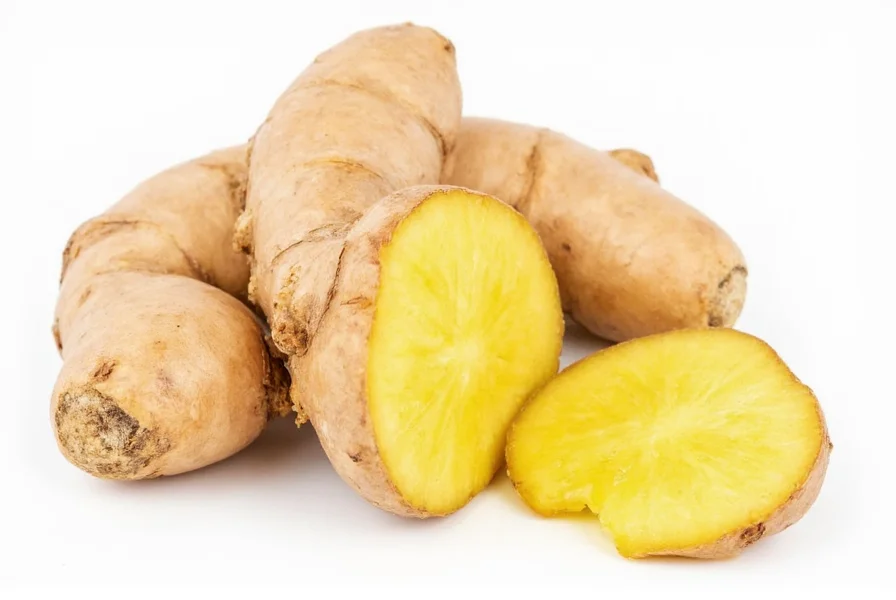When you search for \"ginger ginger ginger\", you're likely seeking information about ginger—the versatile root celebrated for its distinctive flavor and potential health benefits. Let's explore what makes this ancient spice so valuable in modern nutrition and wellness practices.
What Exactly Is Ginger?
Ginger (Zingiber officinale) belongs to the Zingiberaceae family, which also includes turmeric and cardamom. Despite being called \"ginger root,\" it's technically a rhizome—a horizontal underground stem that produces roots and shoots. Native to Southeast Asia, ginger has been used for over 5,000 years in both culinary and medicinal contexts across Asian, Indian, and Arabic cultures.
Three primary varieties dominate global production:
| Variety | Origin | Characteristics |
|---|---|---|
| Cochin | India | Milder flavor, pale yellow interior |
| Bengal | India | Stronger heat, darker yellow color |
| African | West Africa | Most pungent, fibrous texture |
Nutritional Composition of Ginger Root
Ginger's power comes from its unique biochemical profile. A 2-inch piece (about 11 grams) contains:
- Approximately 5 calories
- 0.1g protein
- 1.3g carbohydrates
- 0.2g fiber
- Trace amounts of magnesium, potassium, and vitamin B6
The real value lies in its bioactive compounds, particularly gingerols—the pungent substances responsible for ginger's characteristic heat and many of its health effects. Scientific studies on ginger anti-inflammatory properties consistently identify gingerols as the primary therapeutic components.

Science-Backed Health Benefits of Ginger Root
Modern research validates many traditional uses of ginger. The health benefits of ginger root extend across multiple physiological systems:
Digestive Health Support
Ginger stimulates saliva, bile, and gastric enzyme production. A 2020 meta-analysis published in Nutrients confirmed ginger's effectiveness in reducing nausea and vomiting, particularly for:
- Morning sickness during pregnancy (1.0-1.5g daily)
- Post-operative nausea
- Chemotherapy-induced nausea
Inflammation Reduction
Gingerols inhibit inflammatory pathways similar to non-steroidal anti-inflammatory drugs (NSAIDs), but without the same side effects. Research in the Journal of Medicinal Food demonstrated that 2g of ginger daily significantly reduced markers of inflammation in osteoarthritis patients.
Blood Sugar Regulation
A 2015 study in Complementary Therapies in Medicine found that 2g of ginger powder daily lowered fasting blood sugar by 12.4% and improved insulin sensitivity in type 2 diabetes patients.
Culinary Applications: How to Use Fresh Ginger
Understanding how to use fresh ginger in cooking maximizes both flavor and nutritional benefits. Here's a professional chef's approach:
- Selection: Choose firm rhizomes with smooth skin and no wrinkles
- Preparation: Peel only the amount you'll use immediately (skin protects nutrients)
- Grating: Use a microplane for raw applications to release maximum gingerols
- Cooking: Add toward the end of cooking to preserve volatile compounds
Different forms serve different purposes:
- Fresh ginger: Best for raw applications and quick cooking
- Dried ginger powder: More concentrated flavor for baking
- Candied ginger: Preserves benefits while adding sweetness
- Ginger essential oil: Highest concentration of active compounds

Potential Side Effects and Considerations
While generally safe, ginger may cause issues in certain situations:
- May interact with blood-thinning medications like warfarin
- Can cause heartburn in sensitive individuals when consumed in excess
- Ginger root nutritional value per 100g shows high potassium content, which requires monitoring for kidney disease patients
- Consult your physician before using medicinally if pregnant beyond first trimester
The recommended daily limit for therapeutic use is 4g of raw ginger or 1g of ginger extract. Most culinary applications use far less—typically 1-3g per serving.
Practical Tips for Incorporating Ginger
Maximize ginger's benefits with these evidence-based suggestions:
- Grate fresh ginger into morning smoothies for digestive support
- Add to stir-fries during the last 2 minutes of cooking
- Steep sliced ginger in hot water for 10 minutes to make potent tea
- Combine with turmeric and black pepper for enhanced anti-inflammatory effects
- Store unpeeled ginger in a paper bag in the refrigerator for up to 3 weeks
Conclusion
The repetitive search \"ginger ginger ginger\" likely indicates interest in this remarkable botanical. As we've explored, ginger offers much more than distinctive flavor—it provides scientifically supported health benefits when used appropriately. Whether you're interested in the difference between fresh ginger and dried ginger, seeking natural digestive support, or exploring anti-inflammatory dietary options, incorporating moderate amounts of ginger into your routine can contribute to overall wellness.
What are the primary health benefits of consuming ginger regularly?
Regular ginger consumption offers multiple science-backed benefits including reduced nausea and vomiting, decreased inflammation markers, improved digestion, potential blood sugar regulation, and antioxidant protection. The most well-documented benefits relate to digestive health and inflammation reduction, with studies showing effectiveness at doses of 1-2g daily.
How does fresh ginger compare to dried ginger in terms of nutritional value?
Fresh ginger contains higher levels of gingerols—the primary bioactive compounds—while dried ginger has more shogaols, which form when gingerols dehydrate. Shogaols are more pungent and may have stronger anti-inflammatory effects. Gram for gram, dried ginger powder is more concentrated, so you need less for similar effects. However, fresh ginger provides additional enzymes and volatile compounds lost during drying.
Can ginger help with muscle soreness after exercise?
Yes, research indicates ginger can reduce exercise-induced muscle pain. A study in the Journal of Pain found that 2g of raw or heat-treated ginger daily for 11 days significantly reduced muscle pain following eccentric exercise. The anti-inflammatory properties of ginger appear to accelerate recovery by reducing inflammation in damaged muscle tissue.
What's the best way to preserve ginger's medicinal compounds during cooking?
To preserve ginger's bioactive compounds, add it toward the end of cooking. High heat and prolonged cooking degrade gingerols. For maximum benefit, use raw ginger in dressings, smoothies, or steeped in warm (not boiling) water for tea. If cooking is necessary, add grated ginger during the last 2-3 minutes of preparation. Freshly grated ginger releases more active compounds than sliced.
Frequently Asked Questions
What are the primary health benefits of consuming ginger regularly?
Regular ginger consumption offers multiple science-backed benefits including reduced nausea and vomiting, decreased inflammation markers, improved digestion, potential blood sugar regulation, and antioxidant protection. The most well-documented benefits relate to digestive health and inflammation reduction, with studies showing effectiveness at doses of 1-2g daily.
How does fresh ginger compare to dried ginger in terms of nutritional value?
Fresh ginger contains higher levels of gingerols—the primary bioactive compounds—while dried ginger has more shogaols, which form when gingerols dehydrate. Shogaols are more pungent and may have stronger anti-inflammatory effects. Gram for gram, dried ginger powder is more concentrated, so you need less for similar effects. However, fresh ginger provides additional enzymes and volatile compounds lost during drying.
Can ginger help with muscle soreness after exercise?
Yes, research indicates ginger can reduce exercise-induced muscle pain. A study in the Journal of Pain found that 2g of raw or heat-treated ginger daily for 11 days significantly reduced muscle pain following eccentric exercise. The anti-inflammatory properties of ginger appear to accelerate recovery by reducing inflammation in damaged muscle tissue.
What's the best way to preserve ginger's medicinal compounds during cooking?
To preserve ginger's bioactive compounds, add it toward the end of cooking. High heat and prolonged cooking degrade gingerols. For maximum benefit, use raw ginger in dressings, smoothies, or steeped in warm (not boiling) water for tea. If cooking is necessary, add grated ginger during the last 2-3 minutes of preparation. Freshly grated ginger releases more active compounds than sliced.











 浙公网安备
33010002000092号
浙公网安备
33010002000092号 浙B2-20120091-4
浙B2-20120091-4